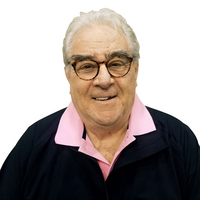It seems like almost all of my life I've been hearing about racial relations in Milwaukee. And, I'll grudgingly admit that I might well be hypersensitive to issues of race.
Milwaukee is going to have a great deal of difficulty moving forward until we find a way to talk about race and to admit that there are problems and that we all need to work toward solving those problems.
A big part of that is learning the code that you hear almost every day, a code that is the way people try to hide their prejudice or disquiet with people of another race. The code is used mostly by white people toward blacks and Latinos.
You can find and hear the code anywhere, but there have been two recent examples in stories in OnMilwaukee.com. Both were in talkbacks. I thought about identifying the talkbacker but decided against it. It's not important who they are. What matters is what they said.
The first came after a very descriptive piece about the old Northridge Shopping Center written by our publisher, Andy Tarnoff. It was a great piece that didn't shy away from the checkered history of the mall. It obviously brought back a lot of memories for a lot of people, most of them good memories.
One of the talkbacks, though, was clear code for racial stereotyping and prejudice.
"Unfortunately Northridge closed prior to rules preventing unruly teens from hanging out at the mall all day long and not spending a dime. Interestingly the nearby neighborhood has changed ... Servite Woods (directly south of the mall) is where my grandmother lived during the late-70s/early-80s ... today I wouldn't even walk through that neighborhood during daylight."
That phrase "unruly teens" means black teens. You can argue with me about it, but that's what the guy meant when he said it. And then the comment about Servite Woods, which is where his grandmother lived. It has become a dominant black neighborhood now and when he says "... I wouldn't even walk through that neighborhood during daylight hours."
Forget for a minute that hundreds of people who live there walk around the neighborhood, both during the day and at night. This guy is afraid of black people and he won't even say it out loud.
The second example of code came as a talkback to an outstanding column written by my colleague Doug Russell about the need for a new arena to replace the Bradley Center. He explained in no uncertain terms how important that would be for everyone, including the Bucks.
This was the response of one reader, in part. "There's a large percentage of people who don't like the NBA players. I would love to see Milwaukee lose the Bucks."
That line about people who don't like the NBA players is another piece of the code. This guy thinks the NBA is made up of mainly black players (he's right) and then takes it the racist step of saying that lots of people don't like them. I mean why? What else could he mean, except the fact that these are black athletes so people (white people) don't like them? This guy obviously thinks that's the truth and it's easy to see the shame in that.
These are not the only two people in Milwaukee who have these attitudes. But they are examples of the much bigger problem of our inability to talk about race in honest and frank terms. And until we get past that, we are not going to be able to come close to solving the problems of racial disparities in our city.
With a history in Milwaukee stretching back decades, Dave tries to bring a unique perspective to his writing, whether it's sports, politics, theater or any other issue.
He's seen Milwaukee grow, suffer pangs of growth, strive for success and has been involved in many efforts to both shape and re-shape the city. He's a happy man, now that he's quit playing golf, and enjoys music, his children and grandchildren and the myriad of sports in this state. He loves great food and hates bullies and people who think they are smarter than everyone else.
This whole Internet thing continues to baffle him, but he's willing to play the game as long as OnMilwaukee.com keeps lending him a helping hand. He is constantly amazed that just a few dedicated people can provide so much news and information to a hungry public.
Despite some opinions to the contrary, Dave likes most stuff. But he is a skeptic who constantly wonders about the world around him. So many questions, so few answers.







